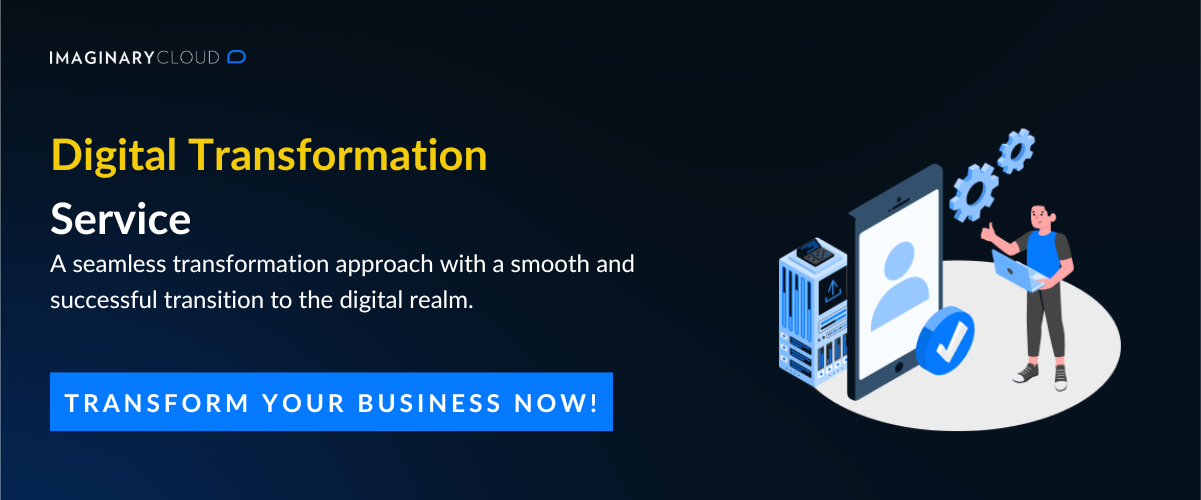Since 2024, most businesses are actively going digital, which puts the Chief Information Officer (CIO) at the centre of this change. CIOs used to just be in charge of IT infrastructure, but now they are also very important in strategy innovation and business leadership. Their job has changed a lot because of how quickly technology and business needs are changing. Now, they need to be able to combine their tech knowledge with strategy and operational knowledge.
The article explains how CIOs are becoming more important in driving digital transformation. It focuses on their strategic initiatives, the challenges they face, and how important it is for them to shape the future of their companies. Come with us as we talk about the strategies CIOs need to succeed in the digital age and the visionary leadership they offer to turn problems into possibilities.
Table of Contents
Evolving Role of the CIO
The CIO's Role in Digital Transformation
Rethinking Digital Transformation
Future of the CIO Role
Final Thoughts
Evolving Role of the CIO
As the world becomes more digital, the CIO's job constantly evolves to stay ahead. CIOs used to just be in charge of IT operations, but now they're also important leaders who set business strategy, handle big risks, use data to gain deep insights, and shape the culture of their companies. Actually, 95% of CIOs expect their roles to change due to digitalisation and their effects are felt at all stages of the company, as well as in interactions with customers and the market as a whole.
Strategic Business Leadership
Nowadays CIOs play a key role in creating and implementing business plans that make the most of technology. For example, at Microsoft, the CIO has played a crucial role in transitioning the company from software licensing to a cloud-based service model. To make this change, the whole business had to be refocused on recurring income streams, increasing customer engagement and ensuring long-term financial stability.
In a different case, Target's CIO led a digital transformation project that completely changed the store's online shopping platform, which was very important during the COVID-19 pandemic. Target met rising consumer demand for online shopping by putting online sales platforms first and improving the digital customer experience. This put Target in a position to compete with e-commerce giants.
Risk Management
Modern CIO has to deal with a lot of opportunities and big risks, such as cyber threats and compliance problems. One important example from the financial world is how the CIO of JPMorgan Chase directly included risk management in the company's plan to go digital. The CIO has made sure that digital banking services protect customer data by using advanced cybersecurity measures and strict compliance procedures. This has helped to maintain trust and follow global financial rules.
Data Utilisation and Analytics
In the digital economy, data is the new currency, and CIOs are at the forefront of turning this asset into useful information. Amazon's chief information officer uses big data analytics to improve customer advice. This will improve the user experience and increase sales. Amazon uses complex data analysis tools to track customer behaviour and then changes its marketing and inventory strategies in real time. This shows how powerful combined data management can be.
Cultural Change Management
As businesses go digital, the CIO's handling of cultural change becomes more important. IBM is a great example of this because the CIO changed to a more flexible and team-based work environment. This meant giving teams new ways to work together across departments and teaching them how to work with projects that move faster and use iterations more often. These kinds of projects have helped IBM stay strong and creative even though technology in the IT business changes quickly.
Involvement in External Customer Experiences
Increasingly, CIOs are shaping internal processes and experiences of customers outside the company. For example, the CIO at Disney has been a big part of making the customer experience better by using augmented reality (AR) and virtual reality (VR) technologies. This approach enhances visitor engagement through immersive experiences. It opens up new ways to make money, showing that the CIO's job is to connect new technologies with good business results.
The CIO's Role in Digital Transformation
The CIO is in charge of IT and acts as a visionary to ensure that big plans for digital change are carried out. These plans include using new tools and changing the way companies work to make them more flexible and data-driven.
Developing and Implementing Digital Strategies
Creating a strong plan that fits with the company's long-term business goals is the first step in digital transformation. This requires careful planning of how technology can improve the efficiency of operations, the way employees deal with customers, and the company's ability to compete. To make sure that the strategy is adopted smoothly across the company, it needs to be put into action with a change management strategy that is just as thorough.
For example, when Adobe switched from selling software in packages to a subscription-based strategy, the CIO played a key role in redefining how to manage products and help customers. To support continuous updates and customer interaction in a subscription economy, this change required a big shift in how the company worked, and products were produced and sent out.
To facilitate these transformations, CIOs must closely collaborate with other C-suite executives, such as the Chief Technology Officer (CTO), who may focus more on emerging technologies, and the Chief Marketing Officer (CMO), who can provide insights on customer needs and market trends. By combining ideas from different fields, we can ensure that digital plans cover all parts of the business.
Preparing for Challenges
Digital transformation can be challenging for a number of reasons, including technical problems and pushback from within the company. CIOs need to be aware of these problems and make plans for how to handle them if they happen. This proactive method is necessary to keep things moving forward and ensure that the transformation strategy stays in line with business goals.
Investing in Modern, Scalable Technology Solutions
Investing in the right technology is essential for a successful digital transformation. Modern, scalable solutions such as cloud computing platforms allow businesses to be more agile and scalable. This is very important for responding to market changes and growing without having to make big investments in IT infrastructure.
Leveraging AI and Machine Learning
Artificial intelligence (AI) and machine learning (ML) are two of the newest technologies that can make things run more smoothly and help people make better decisions. Adding AI to business processes, customer service, and data analytics can help CIOs save time and money while giving customers a more personalised experience. AI-driven data, for instance, can help predict how customers will act and what they will like, which can lead to better marketing plans and new products.
Developing a Comprehensive Data Management and Analytics Strategy
To extract useful information from the huge amounts of data that modern digital activities create, you need a clear data management and analytics plan. This plan should ensure that the data is correct, that data security laws are followed, and that data is used effectively in decision-making.
Putting cybersecurity first
Cybersecurity must be a top concern in the digital transformation plan, both in terms of finances and strategy. As businesses become more digital, they become more vulnerable to cyber threats. To keep custo mer trust and protect private data, you need to spend money on strong security systems, constant monitoring, and team training.
According to the IBM Cost of a Data Breach Report 2023, a data breach costs an average of $4.45 million. Besides costing a business money, data breaches harm the company's reputation and customer trust. This is why the CIO's responsibility to protect data is critical.
Planning for the Long Run
Finally, digital transformation is an ongoing journey, not a one-time project. CIOs need to think about the long term when making plans, and they need to keep reviewing and changing their plans as new technologies emerge and business needs change. This method looks to the future to ensure that the organisation stays strong and adaptable as the digital world changes.

Rethinking Digital Transformation
As businesses try to figure out how to operate in the digital era, they need to rethink their digital transformation. This is important to make operations more efficient and to gain a competitive edge, ensure long-term growth, and uphold ethical standards. With this new point of view, change needs to be looked at as a whole. It should focus on flexibility and resilience, long-term sustainability being built in, and ethical standards and compliance being upheld.
Considering the Business Impact
When planning and carrying out digital transformation, it is important to keep in mind how it can change the competitive scene. By integrating advanced digital technologies, businesses can streamline operations and create new value propositions and revenue streams. For example, manufacturers can set themselves apart in the market by using IoT (Internet of Things) technologies to make their supply chains more efficient and create new customer-focused services, like predictive maintenance and automated replenishment.
Building Agility and Resiliency
It's important for businesses today to respond quickly to market changes and get back to normal after problems. Digital change can make organisations more agile and resilient by letting them act quickly on threats and opportunities. Leveraging cloud technologies and flexible IT architectures allows businesses to scale operations up or down as needed and respond more adeptly to consumer demands or supply chain interruptions.
Emphasising Sustainability Principles
Sustainability is no longer optional but a mandatory aspect of modern business strategies. Digital transformation offers significant opportunities to enhance sustainability practices. For instance, data analytics can optimise energy use and reduce waste across operations. Companies like Google have used AI to improve the efficiency of their data centres, dramatically reducing their energy consumption and environmental footprint.
Incorporating Ethics and Compliance
As digital transformations deepen, ethics and compliance become more important, particularly in handling data privacy and meeting regulatory requirements. Companies need to make sure that their digital strategies protect user privacy and follow data security laws like GDPR in Europe and CCPA in California. This helps avoid legal penalties and builds trust with customers and stakeholders. CIOs must advocate for and implement policies that enforce data ethics, secure user data, and ensure transparency in data collection, use, and storage.
Harnessing Competitive Advantage
For businesses to really gain a competitive edge through digital transformation, they need to rethink their approach to include these broader aspects. Not only do they have to use new technologies, but they also have to change their operations, culture, and value propositions to meet the strict needs of regulators and meet the changing demands of customers.
By rethinking digital transformation with these focuses, companies can position themselves as leaders in a technologically advanced marketplace, capable of surviving and thriving through innovation and responsible practices.
Future of the CIO Role
The Chief Information Officer role continues to evolve rapidly, influenced by technological advancements, economic shifts, and changing workplace dynamics. Here are a few important things that will determine the CIO's duties in the future and how they affect the company.
Emerging Trends and Technologies
The acceleration of digital technology adoption introduces new trends that CIOs must integrate into their strategies. AI, ML, blockchain, and quantum computing are some technologies that are changing how businesses work. CIOs need to stay on top of these trends, understand what they mean, and use them to drive business value. They also need to keep a close eye on the new tech world to see what the next shifts will be.
Cost-Control and Inflation
In the face of potential economic downturns or global financial crises, CIOs must develop strategies that enable resilience and sustainability. This involves adopting cost-effective technologies and processes that do not compromise innovation or operational efficiency. For example, using cloud computing can lower the initial costs of IT systems and allow for flexibility when the economy changes. It is very important to handle your budget well and invest in technologies that give you a substantial return on your investment.
Digital Customer Experiences
Enhancing digital customer experiences is paramount as consumer expectations continue to evolve. Data and AI must be used by CIOs to make experiences across digital platforms more personalised, interesting, and smooth. For instance, companies can offer more personalised suggestions and services to customers by using AI to look at data on their behaviour, significantly improving customer satisfaction and loyalty.
Growing Data-Driven Culture
CIOs are central to cultivating a data-driven culture within their organisations. This involves implementing the right tools and technologies for data collection and analysis and fostering an environment where data-driven decision-making is the standard. Training and empowering employees to utilise data in everyday decisions will be critical for businesses to remain competitive and agile.
The Push for Innovation
Innovation is a key driver of business success. CIOs play a critical role in fostering an environment where innovation can thrive. This includes encouraging the exploration of new ideas, technologies, and business models and maintaining an agile approach that allows for the rapid implementation of effective solutions. Innovation is continuous, with CIOs leading the charge in testing, learning, and adapting.
Cybersecurity
As the digital world grows, so do the online threats that exist in it. CIOs need to make sure that their companies are ready to defend against and react to cyber threats. This includes investing in advanced security technologies, training staff on security best practices, and developing comprehensive incident response plans.
Adapting to Remote and Hybrid Work Environments
The shift towards remote and hybrid work environments has significant implications for digital transformation strategies. When it comes to adopting solutions that make it easier for teams to work together, communicate, and stay safe, CIOs need to make sure that their IT infrastructure can support distributed teams. Virtual private networks (VPNs), cloud services, and improved security measures are all important tools for helping a remote workforce do their jobs well.
Final Thoughts
As the Chief Information Officer's job grows, they play a key part in leading their companies through digital transformation. They must stay abreast of technological trends, foster a data-driven culture, and ensure robust cybersecurity. By transforming disruptions into opportunities, CIOs can lead their organisations toward sustained growth and innovation.
CIOs are very important in this age of fast technology change. They can help their companies grow by setting goals and encouraging constant innovation. To explore how digital transformation can redefine your business, visit our digital transformation service page and contact us for a personalised consultation. Take a confident look to the future and push your company past its usual limits.




